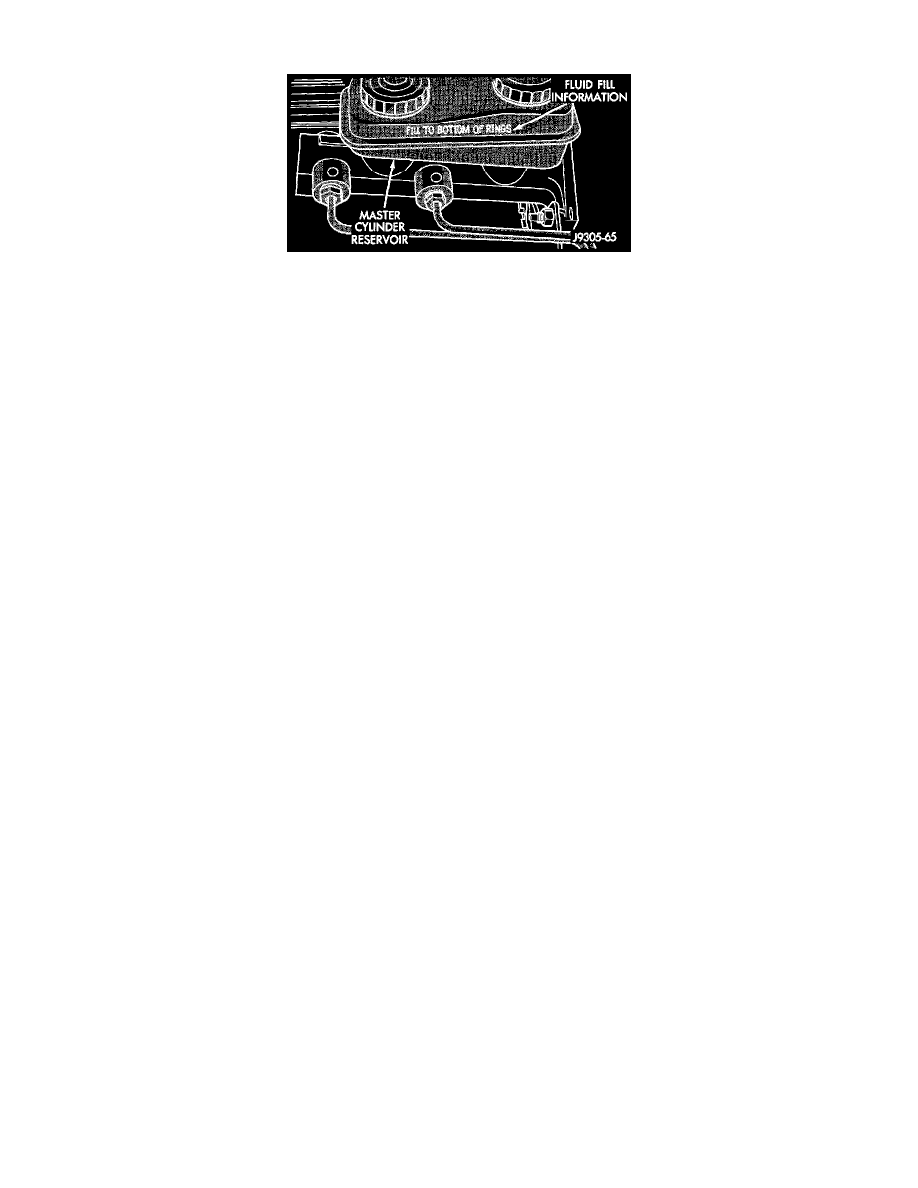Dakota 2WD V6-239 3.9L (1987)

Brake Fluid: Service and Repair
Fig. 1 Location Of Master Cylinder Fluid Level
Correct Brake Fluid Level
Always clean the master cylinder reservoir and caps before checking fluid level. If not cleaned, dirt could enter the fluid.
The fluid fill level is indicated on the driver side of the master cylinder reservoir.
The correct fluid level is to the bottom of the ring indicators in the reservoir filler openings. If necessary, add fluid to the proper level.
Importance Of Clean Brake Fluid
The antilock system brake fluid must be clean and free of any type of contamination. Foreign material in the fluid, or non-recommended fluid will
cause system malfunctions.
Clean the reservoir and caps thoroughly before checking level, or adding fluid. Cap open brake lines and hoses during service to prevent dirt entry.
Dirt or foreign material circulating within the system will lead to component malfunctions.
Clean the reservoir and caps before checking level and use clean, fresh brake fluid only.
Brake Fluid Contamination
Oil in the fluid will cause brake system rubber seals to soften and swell. The seals may also become porous and begin to deteriorate.
If fluid contamination is suspected, drain off a sample from the master cylinder. A suction gun can or similar device can be used for this purpose.
Empty the drained fluid into a glass container. Contaminants in the fluid will cause the fluid to separate into distinct layers. If contamination has
occurred, the system rubber seals, hoses and cups must be replaced and the system thoroughly flushed with clean brake fluid.
